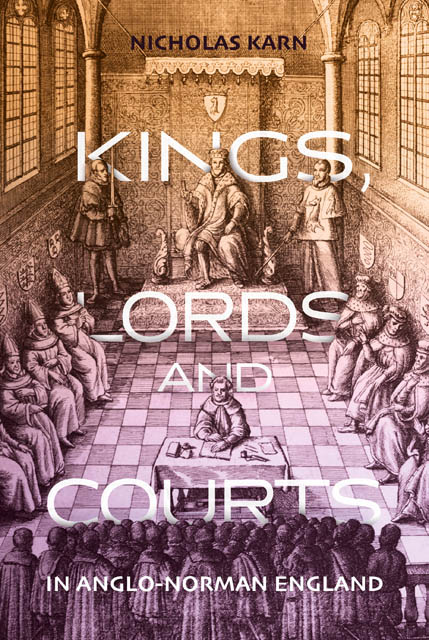Book contents
- Frontmatter
- Dedication
- Contents
- Preface and Acknowledgements
- List of Abbreviations
- Introduction
- 1 Lords and their Dependents in Court: The Later Anglo-Saxon Paradigm
- 2 The Aspirations of Lords in Eleventh- and Twelfth-Century England
- 3 Private Claims and Hundreds in the Later Eleventh and Earlier Twelfth Centuries
- 4 The Division of Hundreds and the Proliferation of Courts
- 5 From Debate within Courts to Debate between Courts: The Origins of Jurisdictional Debate
- 6 Courts, Pleas and Kings in the Early Twelfth Century
- 7 Pleas and Justices in the Early Twelfth Century
- Conclusion
- Appendix: The Evidence for Justices, 1100–54
- Bibliography
- Index
3 - Private Claims and Hundreds in the Later Eleventh and Earlier Twelfth Centuries
Published online by Cambridge University Press: 18 January 2023
- Frontmatter
- Dedication
- Contents
- Preface and Acknowledgements
- List of Abbreviations
- Introduction
- 1 Lords and their Dependents in Court: The Later Anglo-Saxon Paradigm
- 2 The Aspirations of Lords in Eleventh- and Twelfth-Century England
- 3 Private Claims and Hundreds in the Later Eleventh and Earlier Twelfth Centuries
- 4 The Division of Hundreds and the Proliferation of Courts
- 5 From Debate within Courts to Debate between Courts: The Origins of Jurisdictional Debate
- 6 Courts, Pleas and Kings in the Early Twelfth Century
- 7 Pleas and Justices in the Early Twelfth Century
- Conclusion
- Appendix: The Evidence for Justices, 1100–54
- Bibliography
- Index
Summary
The preceding chapters have sketched some of the background to the appearance of private courts. They have suggested that private courts did not exist in Anglo-Saxon England, because there is no concrete evidence for them, and because private courts were not compatible with the forms of lordship that can be seen in England before 1066. So far as can be seen, relationships between lords and dependents were managed in the public assemblies of hundred and shire, though the evidence for this is not uniform; the hundreds included greater lords and lesser lords, and even free peasants, but it is less clear how far they managed the links between lords and the unfree. The laws show, however, that the hundred in the tenth century could claim some powers even over slaves where they were accused of disruption of public order. There are important indicators of change, especially during the earlier eleventh century. The rise of the concept of soke helped to label and formalise some of the claims that lords could exact from their dependents, but also came to be used as a tool against other claims, and as a means for exempting the dependents of a lord from the attentions of the newly created sheriffs. Soke forms a parallel to the way in which lords sometimes used the formation of new churches as a means for hiding their dependents from many of the claims that might be made by minster churches. The drive towards monopolisation was the aspiration that drove the appearance of private courts.
This chapter aims to show how lords were able to take control of hundreds and subordinate them to their own interests. This is one model of change, but not the only one; the following chapter sketches another. Lords’ seizure of control over hundreds appears first in this book because it seems to have been the earliest to be put into effect. Other methods, in which lords detached parts of hundreds or created their own courts, accounted for most of the courts that lords controlled by 1150 or so. The appearance of these numerous courts depended on the development of an idea that courts were entities that could be owned, and that idea grew in relation to the hundreds first.
- Type
- Chapter
- Information
- Kings, Lords and Courts in Anglo-Norman England , pp. 72 - 100Publisher: Boydell & BrewerPrint publication year: 2020



